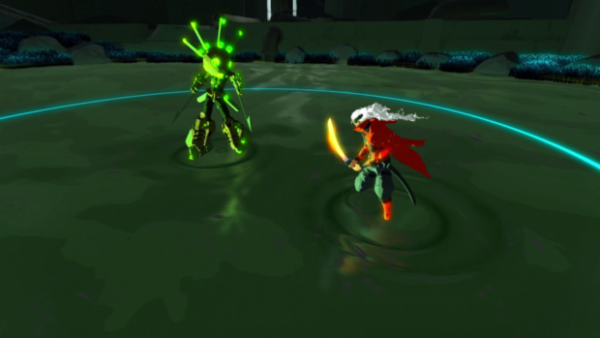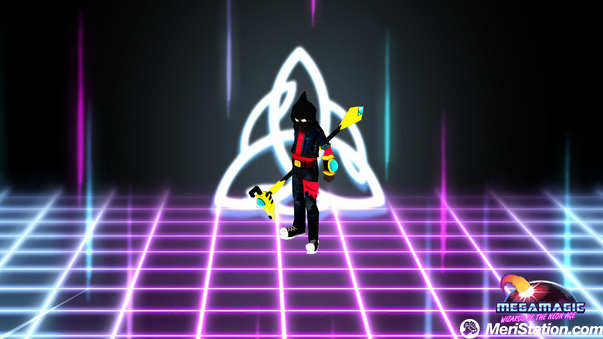When you finish Furi and the playable credits are ending, in the section of acknowledgments appear various Japanese creators, such as Hideo Kojima,
Shinji Mikami or Hideki Kamiya, as well as three Japanese studios: Platinum Games, Grasshopper Manufactures and Treasure Co. Undoubtedly they are the references of the studio, The Game Bakers, when planning this game.
Furi is a shoot’em up. One that looks like the classics of the 80s and mid-90s, with overhead view, and also those bullet hells that seem to be slowly
returning to popularity, if they ever had it out of the niche of the shooter hardcores where they were born. It is also a one-on-one combat game, in the third person,
in which with our enigmatic protagonist swordsman we must block attacks, dodge and strike at the right moment. To all this we must add a devilish, satisfying and frustrating difficulty in equal parts. How does Furi do to shape all this?
We embody a swordsman, similar to a samurai, who has been locked up in a prison, and seems to have been there for a long time, being tortured and separated from the outside world for some unknown reason. But someone helps us to escape, although to get
out of the prison in which we are trapped we must end up with a series of final bosses, the only enemies of the game, each with its mechanics, its brief history and its personality; their stories are developed in a similar way to those of the heads of the No More Heroes, although with some points of ambiguity.
The bosses, as in any game that tries to respect the Japanese tradition of shoot’em up, have several phases with different behaviors, movements and attacks. So, in a first phase maybe it is a bullet hell in which to dodge energy balls or waves that fill the entire screen while trying to scratch a bit the life bar of the enemy, while another phase is a body combat to body where we
must coordinate our movements perfectly. We constantly change the register, going from dodging bullets and shooting to face each other face to face.
As the main element of the game, most bosses are taken care of but it gives the sensation that, either due to lack of time or ideas, not all have the same effort in creating new mechanics and differentiating them from the rest.
Our tools to emerge victorious from combat are an automatic shot that we use and direct with the right stick of the pad (as in Geometry Wars),
a charged shot, two types of melee (normal and charged) and the mechanics that endow of more complexity to Furi: teleportation. Pressing X we
teleport a few meters to the place where we direct the joystick, allowing us to dodge waves of bullets or get behind the enemy after a physical attack to counterattack in the back.
In short, everything is based on attacking, dodging and shooting, but doing it with a head and repeating the phase again and again due to the high difficulty, which can sometimes be frustrating and unjust, and in others highly satisfactory because of the
feeling of having learned playing after finishing a confrontation. It’s something that everyone may not like, and what the Game Backers have thought
of, so they have included a Ride mode in which bosses are softer, have fewer phases and we have more lives. And, even so, by testing some combats in this way we have died against a certain boss.
Speaking of walks, Furi also has them, literally. Between combat and combat we travel the world where they have us prisoners, where all we have to do is walk and listen to the monologues of the guy who rescued us, who gives us clues about where we are and who we are, but always with ambiguous sentences, sometimes pretentious . It is not a bad idea per se to add tints of
walking simulator to a title of these characteristics. The problem is that these fragments of the game want to be more than they are, and some sections are too long.
Of course, they are beautiful artistically. The game of cameras to show us the particular places of the game in different perspectives is effective, but also shows the graphic gaps of the game.


